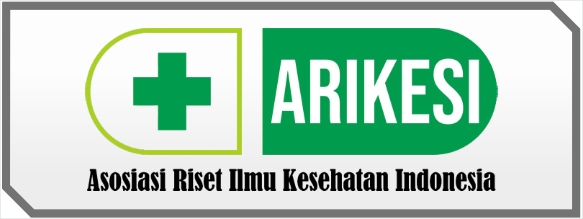Keterkaitan Volume Prostat dengan Skor IPSS pada Penderita Benign Prostatic Hyperplasia (BPH) di RSU Haji Medan
DOI:
https://doi.org/10.57213/tjghpsr.v2i4.474Keywords:
ternational prostate symptom score, BPH, prostate volumeAbstract
Benign prostatic hyperplasia (BPH) is a benign neoplasm characterized by hyperplasia in the periurethral area of the prostate. This condition often causes lower urinary tract symptoms (LUTS) that can interfere with daily activities although rarely life-threatening. Prostate volume is an important indicator to assess the severity, progressivity of the disease, as well as response to treatment. The International Prostate Symptom Score (IPSS) questionnaire is used to measure the severity of LUTS symptoms. This study aimed to evaluate the relationship between prostate volume and IPSS score in BPH patients at RSU Haji Medan. This study used a retrospective analytic observational design with a cross-sectional approach. Samples were selected based on inclusion and exclusion criteria, with data taken from BPH patients in the urology department of RSU Haji Medan during the period September to December. Analysis was performed using Spearman correlation test. Of the 93 samples, the highest incidence of BPH was found in the age group of 61-70 years (43.0%). Most prostate volume was in classification 1 (20-39 cc) with 53 people (57.0%), while the most frequent degree of symptoms was severe degree (high IPSS) with 39 people (41.9%). Spearman correlation test showed a significant association between prostate volume and IPSS score (p < 0.001), with a very strong positive correlation coefficient (r = 0.853), indicating a unidirectional relationship. Prostate volume has a significant relationship with IPSS score in patients with Benign Prostatic Hyperplasia (BPH). This finding underscores the importance of prostate volume measurement in assessing symptom severity and determining treatment strategies.
References
A. C. D. S. Pinto, Y., Kurniawan, & I. G. N. Pramesemara. (2021). Hubungan andropause dengan skor IPSS pada pegawai pusat pemerintahan. Intisari Sains Medis, 12(1), 234–239.
Abrams, P. (2012). Re: Update on AUA guideline on the management of benign prostatic hyperplasia. Journal of Urology.
Agrawal, C. S., et al. (2008). Correlation of prostate volume with international prostate symptom score and quality of life in men with benign prostatic hyperplasia. Nepal Med Coll J, 10(2), 105–106.
Ahmed, I. (2017). Relationship between prostate volume and lower urinary tract symptoms (LUTS) as measured by International Prostate Symptom Score (IPSS). International Journal of Medical and Health Research, 26–28.
Arafa, M. A., Farhat, K., Aqdas, S., Al-Atawi, M., & Rabah, D. M. (2015). Assessment of lower urinary tract symptoms in Saudi men using the International Prostate Symptoms Score. Urol Ann, 7(2), 221–225. https://doi.org/10.4103/0974-7796.150492
Asalia, M., Monoarfa, R., & Lampus, H. (2015). Hubungan antara skor IPSS dan skor IIEF pada pasien BPH dengan gejala LUTS yang berobat di Poli Bedah RSUP Prof. DR. R. D. Kandou Manado. Jurnal e-Clinil (eCl), 3(1).
Awad, et al. (2015). Correlations between prostate volume and lower urinary tract symptoms in Sudanese patients with benign prostatic hyperplasia. Basic Research Journal of Medicine and Clinical Sciences, 4(4).
Bassay, A., et al. (2015). Hubungan antara volume prostat dengan kualitas hidup penderita LUTS di beberapa puskesmas Kota Manado. Bagian Bedah, Fakultas Kedokteran Universitas Sam Ratulangi.
Boenyamin, F. (2018). Hubungan volume prostat dengan skor IPSS pada pasien pembesaran prostat jinak di RSUD Dr. Moewardi Surakarta. Jurnal Kedokteran Sebelas Maret, 2(1).
Wong, C. K., Choi, E. P. H., Chan, S. W. H., Tsu, J. H., Fan, C., & Chu, P. S. (2017). Use of the International Prostate Symptom Score (IPSS) in Chinese male patients with benign prostatic hyperplasia. Aging Male, 20(3), 241–249.
Fauziya, Z., Sutapa, H., & Indah, D., et al. (2021). Literature review: Pengaruh volume prostat terhadap kejadian retensi. Published online, 93–102.
Hoo, K. N., Ayob, M. A., Salim, M. I., Abduljabbar, H. N., & Supriyanto, E. (2014). Prostate volume measurement using transabdominal ultrasound scanning. Advances in Environment Biotechnology and Biomedicine.
Keong, T. F. (2015). Solving the benign prostatic hyperplasia puzzle. Asian Journal of Urology, 3, 6–9.
Lee, A., et al. (2015). Can intravesical prostatic protrusion predict bladder outlet obstruction even in men with good flow? Asian Journal of Urology.
Minyong, K., et al. (2015). Urodynamic features and significant predictors of bladder outlet obstruction in patients with LUTS/BPH and small prostate volume. International Urology Nephrology.
Mochtar, C., et al. (2015). Panduan penatalaksanaan klinis pembesaran prostat jinak (Benign Prostatic Hyperplasia/BPH). Jakarta: Ikatan Ahli Urologi Indonesia.
NG, B., et al. (2015). Correlation of sonographic prostate volume with International Prostate Symptom Score in South India. International Journal of Research in Medical Sciences, 3(11).
Parnham, A., & Haq, A. (2013). Benign prostate hyperplasia. Journal of Clinical Urology.
Purnomo, B. (2015). Hiperplasia prostat benigna. Dalam: Dasar-dasar urologi (Edisi ke-3). Malang: Sagung Seto.
Robbins. (2018). Buku ajar patologi dasar. (Edisi ke-10). Jakarta: Elsevier.
Tanagho, E. (2015). Urinary obstruction & statis. Dalam: McAninch, J., & Tanagho, E. (Editor). Smith’s General Urology (Edisi ke-18). US: McGraw Hill Medical.
Terris, M. K. (2015). Ultrasonography and biopsy of the prostate. Dalam: Walsh, P. C., et al. (Eds). Campbell-Walsh Urology (Edisi ke-11). Philadelphia: Elsevier.
Tjahjodjati, et al. (2017). Panduan penatalaksanaan klinis pembesaran prostat jinak. Jakarta: Ikatan Ahli Urologi Indonesia.
Utami, R., Wahyudi, S., & Hermansyah, Y. (2018). Hubungan prostate volume dan intravesical prostatic protrusion terhadap International Prostate Symptom Score pada pasien benign prostatic hyperplasia. Jurnal Pustaka Kesehatan, 6(1).
Downloads
Published
Issue
Section
License
Copyright (c) 2024 The Journal General Health and Pharmaceutical Sciences Research

This work is licensed under a Creative Commons Attribution-ShareAlike 4.0 International License.













